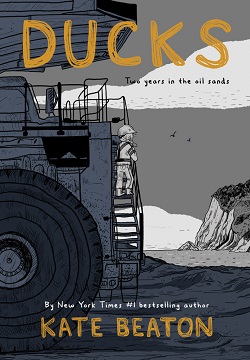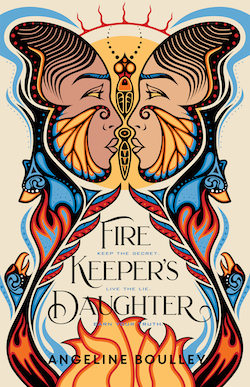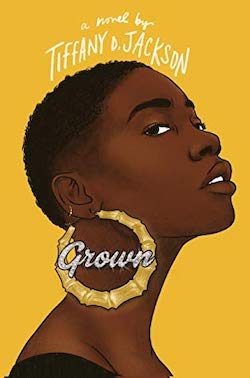This piece originally appeared in the Washington Independent Review of Books:
 Seton Academic High is an elite prep school with an affluent and mostly white student body. With numerous teams, extracurriculars, and a student paper with thousands of subscribers, Seton is best known for its Varsity (always capitalized) football team. And with good reason. The team has been on a winning streak for twelve years–undefeated in every game leading up to the state playoffs.
Seton Academic High is an elite prep school with an affluent and mostly white student body. With numerous teams, extracurriculars, and a student paper with thousands of subscribers, Seton is best known for its Varsity (always capitalized) football team. And with good reason. The team has been on a winning streak for twelve years–undefeated in every game leading up to the state playoffs.
Sixteen-year-old Aly Jacobs has always felt special being a part of Seton which was never a given for her the way it is for some of Seton’s legacy students. Aly and her boyfriend J already stand out as some of the only Black students–especially ones being bussed into Seton from a poorer neighborhood. Aly has always felt the pinch, keenly aware that she lacks the disposable cash to keep up with her classmates; knowing that she and J will never live closer enough to Seton to be true insiders on all of the inside jokes and routines because “it’s hard when you live an hour away, and you don’t have a car, and you don’t have twenty dollars in spare change for a pastry, and you can’t be at the coffee shop or the moves or the Galeria for pictures like these.” But every long commute, every missed hangout will be worth it because a Seton education is the first step to opportunity.
Aly deals with imposter syndrome as a junior editing the school paper while J is already getting attention as the next Varsity quarterback. Will J be able to keep the team’s undefeated streak alive? Will he take Varsity to new levels as the first Black quarterback in the school’s history? No one knows yet. Either way Parker Adams–the younger brother of the now legendary Cooper Adams who started Seton’s streak all those years ago–plans to make his own mark first.
Parker’s dream of eclipsing his brother takes a darker turn when the schoolyear starts with rumors that Parker hooked up with Britt MacDougal–his longtime girlfriend Michelle Rodriguez’s best friend–over the summer. As the school’s most popular clique fractures everything students thought they knew about Seton begins to erode. Aly learns more about Seton’s history as she befriends social outcast Britt. As their bonds deepen Aly questions the importance of Seton’s traditions and history and if her own legacy will be helping to perpetuate Seton’s privilege or speaking out against its insidious past in Seton Girls (2022) by Charlene Thomas.
Find it on Bookshop.
Thomas’ debut novel lays out “What it is.” in chapters of the same name with Aly’s first person narration beginning in August 2019 at the start of Aly’s junior year at Seton alongside flashbacks of “What it was.” where a third person narrator teases out key events that led to the advent and progression of Seton’s infamous winning streak. A prologue from The Seton Story–the paper Aly edits–immediately puts readers on alert as everything that has previously made Seton so great is stripped away with the ominous observation, “If you thought that that made us the lucky ones … You were wrong.” While there is some diversity among the principal cast including Black students Aly, J, and Britt as well as other characters cued as BIPOC based on their surnames, it is clear that Seton is predominantly white and wealthy. This income disparity in particular weighs heavily on Aly who is eager to blend in with the assumed privilege at Seton not wanting anyone to “feel like we’re different.”
Short, fast-paced chapters and prose laden with foreshadow like Parker’s description of Britt as a bomb–“And maybe you meet her and survive it and it’s a miracle that you’ll talk about forever with anyone who’ll listen. Maybe that’s what happens, and it feels like magic. Or maybe the bomb goes off and she destroys you.”–add intensity to this story as both Aly and readers begin to unpack what exactly has made Seton’s varsity team so unbeatable.
True to its title, Seton Girls, keeps the focus squarely on the school’s female student body even as it unpacks the misogyny and sexism that has long been the source of many of Seton’s storied traditions. Aly’s narration is filled with naked longing to be part of Britt’s magical group of girlsfriends, “Britt’s term, so it never, ever gets confused with the less important role of being a girlfriend,” alongside Britt, Michelle and their other friends Bianca Patel and Kelly Donahue. Aly is not alone in her fascination with “the four of them together like this weightless, perfect, intoxicating aura everywhere they go” attracting both objectifying male gazes and envious female ones adding homoerotic subtext to many of Aly’s interactions with Britt and her friends since “those girls are distracting in the most addictive way.”
Subtle characterization illustrates the income disparity between Aly and her classmates in small details like Aly’s obsession with Glad Plugins which “For a while we had to use them, when they were paving the road near our house and it made everything inside smell like tar. That’s over now, but I’m still obsessed.” These sharp observations are often undercut early in the story with Aly’s gushing sentimentality for all things Seton where “Kyle can be drunk ranting on my left and Gina-Melissa can be reciting perfection on my right, and it’s not weird, or ironic, or some wild juxtaposition. It just is. We all just belong here. And it just works.” The impact of the novel’s opening with Aly’s article in The Seton Story about Parker promising to share the truth about Seton is similarly diluted as Aly spends most of the novel debating how best to support Britt before finally delivering on the story we see on page one.
Details surrounding the varsity football team’s success are often mired in specific details of football gameplay including the playoff model change observed by Cooper Adams years ago where the team doesn’t “make it to States anymore just because we have a better regular season record than everyone else. We just need to be good enough to make it to the playoffs.” which might be pull readers out of the otherwise suspenseful backstory. The ultimate payoff for the plot, especially Britt’s character arc, comes in a final act shift that casts the entire story in a different light while highlighting the power of both agency and female solidarity.
Seton Girls is a timely novel adding to the conversation surrounding the #MeToo movement alongside questions of both privilege–especially white male privilege–and consent. As Britt aptly tells Aly “If the door is open but you know you can’t get up and walk out of it that is force. That’s, like, the greatest kind of power that exists. That is corporation-level power. And it’s that kind of power–not the muscles or the dumb boy-tanks they wear–that guys like Parker will tell you isn’t real. And swear they’re not that type. But it’s the realest thing in the world.”
Possible Pairings: One Great Lie by Deb Caletti, You Too?: 25 Voices Share Their #MeToo Stories edited by Janet Gurtler, Lawless Spaces by Corey Ann Haydu, Required Reading for the Disenfranchised Freshman by Kristen R. Lee, Tigers, Not Daughters by Samantha Mabry, You Truly Assumed by Laila Sabreen, A Room Away From the Wolves by Nova Ren Suma
 Before she ever appeared on the New York Times bestseller list for her comics, Kate Beaton was Katie: A university graduate drowning in debt like a lot of the young people in Canada’s Cape Breton. She knows nowhere else will ever feel like home the way Mabou does. She knows she’ll return.
Before she ever appeared on the New York Times bestseller list for her comics, Kate Beaton was Katie: A university graduate drowning in debt like a lot of the young people in Canada’s Cape Breton. She knows nowhere else will ever feel like home the way Mabou does. She knows she’ll return.








